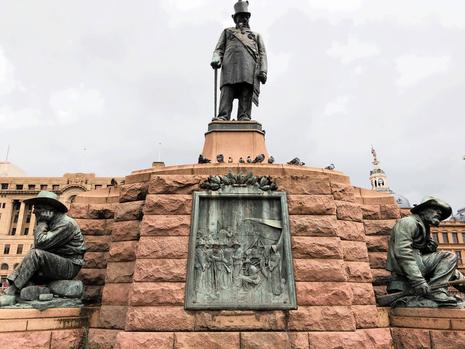
On Friday, Arts and Culture Minister Nathi Mthethwa gave a report-back on work being done to transform South Africa’s heritage landscape.
He noted it was necessary to continue to dismantle the apartheid social structure, including the removal of colonial and apartheid-era monuments and place names.
The process initiated by Mthethwa in 2015 was a response to incidents surrounding statues in public spaces, after the demand for the removal of a statue of Cecil John Rhodes at the University of Cape Town. It sparked a national debate over the transformation of the heritage landscape to foster a new national identity.
Among the resolutions taken was that there was a need to create civic awareness and national consciousness using shared symbols such as the flag and national anthem, while offensive names and other “symbols of hate” should be removed.
However, this did not mean every old name and statue had to be removed. Where such symbols reflected separate histories, an idea was mooted to create public spaces where they may be retained but grouped with others – such as heroes of the fight for justice and freedom – to offer a narrative of our shared history.
This approach has led to the decision to retain the bronze statue of Paul Kruger, which has stood on Church Square for more than 60 years, as part of the redevelopment currently underway with lawns, trees and benches, making it a more welcoming public space.
Residents can expect to see, as part of the plan, new statues in conversation with Kruger, starting with Kgosi Mampuru II, who was hanged at the former Pretoria prison in 1883 (the year Kruger became president of the South African Republic), and after whom the city prison was renamed in 2013.
The compromise position can be seen in Pretoria, where streets such as Hans Strijdom and Hendrik Verwoerd have been renamed; we have Steve Biko Hospital and Sefako Makgatho University; new monuments such as Freedom Park and the Living Women’s Monument.
The debate around symbols and names is by no means over, and we should continue to embrace change which can lead to dignity and social cohesion.










